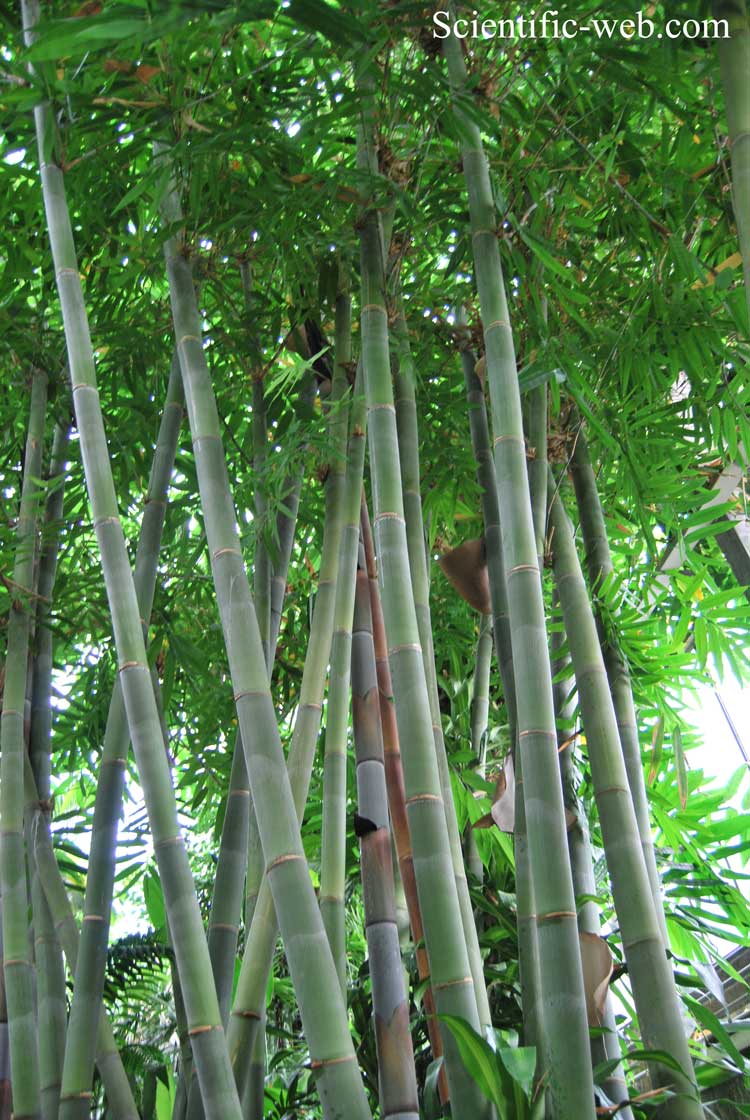
Dendrocalamus giganteus, Photo: Michael Lahanas
Classification System: APG IV
Superregnum: Eukaryota
Regnum: Plantae
Cladus: Angiosperms
Cladus: Monocots
Cladus: Commelinids
Ordo: Poales
Familia: Poaceae
Subfamilia: Bambusoideae
Tribus: Bambuseae
Subtribus: Bambusinae
Genus: Dendrocalamus
Species: Dendrocalamus giganteus
Name
Dendrocalamus giganteus Munro
References
Transactions of the Linnean Society of London. London 26:150. 1868
USDA, ARS, Germplasm Resources Information Network. Dendrocalamus giganteus in the Germplasm Resources Information Network (GRIN), U.S. Department of Agriculture Agricultural Research Service. Accessed: 07-Oct-06.
Vernacular names
magyar: ÓriásbambuszDendrocalamus giganteus, commonly known as giant bamboo,[3] is a giant tropical and subtropical, dense-clumping species native to Southeast Asia. It is one of the largest bamboo species in the world.
Description
This section does not cite any sources. Please help improve this section by adding citations to reliable sources. Unsourced material may be challenged and removed. (May 2020) (Learn how and when to remove this template message)
A very tall, large-culmed, grayish-green bamboo, it grows in clumps consisting of a large number of closely growing culms, and typically reaches a height of 30 meters (98 feet), but one clump in Arunachal Pradesh, India reached a height of 42 meters. Under favorable conditions, it can grow up to 40 cm per day.
Culms are straight and grayish green with a powdery appearance, becoming brownish green on drying, with a smooth surface. Young shoots are blackish purple. Internode length is 25–40 cm, and diameter is 10–35 cm. Culm walls are thin, branching only at the top. Aerial roots occur up to the eighth node. The rootstock is stout.
The culm sheath is greenish when young, becoming dark brown when mature. Sheaths are large and broad, length of sheath proper 24–30 cm, and width is 40–60 cm. The blade is triangular, 7–10 cm long. The top of the sheath is rounded. Auricles are small, equal, and crisped. The upper surface of the sheath is covered with stiff, gold and brownish hairs. The under surface is glossy, and not hairy. Sheath fall off is early.
Distribution and habitat
Dendrocalamus giganteus is native to India, Myanmar, Thailand and China's Yunnan province. Its habitat is in forests and on river banks, from sea level to 2,000 metres (6,600 ft) altitude.[1]
Uses
Dendrocalamus giganteus is used in construction and weaving. The shoots are edible.[1]
References
Contu, S. (2013). "Dendrocalamus giganteus". IUCN Red List of Threatened Species. 2013: e.T44393532A44447051. doi:10.2305/IUCN.UK.2013-2.RLTS.T44393532A44447051.en. Retrieved 19 November 2021.
"Dendrocalamus giganteus". World Checklist of Selected Plant Families (WCSP). Royal Botanic Gardens, Kew. Retrieved 14 May 2020.
"Dendrocalamus giganteus". Germplasm Resources Information Network (GRIN). Agricultural Research Service (ARS), United States Department of Agriculture (USDA). Retrieved 14 May 2020.
Retrieved from "http://en.wikipedia.org/"
All text is available under the terms of the GNU Free Documentation License

